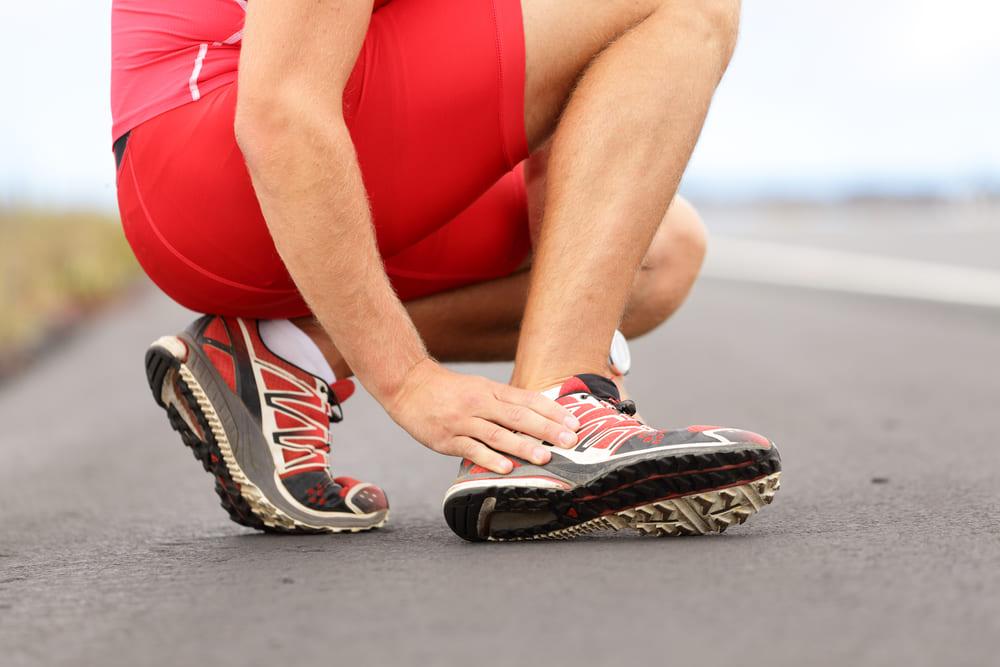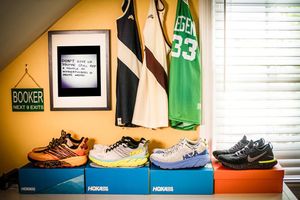Most footwear does not fit comfortably straightaway, including running shoes. The reason behind this is that our feet have different shapes. Moreover, the application of pressure as we are running is uneven in some or many cases.
The two factors above make it necessary for your running shoes to take time to adjust. The question is, how long does it take to break in running shoes?
The simple answer to this is that:
Averagely, runners can take between 2-3 weeks to break in new pair of running shoes before a shoe can fit comfortably.
However, some models may take a relatively shorter or longer time. In addition, the break-in period is determined by the frequency in which the pair of shoes are used.
Here are a few critical tips that you need to note about the breaking in of brand new running shoes.
Break-in Period for New and Old Shoes
If your boots are the right fit, they don’t require substantial time to break them. Such new running shoes may feel quite comfortable even during your first run.
Several factors determine how fast you break in a pair of running shoes. These are:
- The model of the shoe
- How often do you use the shoe
- The sole of the shoe
- How do you like your new pair of shoes to feel
That said, it does not mean you don’t require break-in time for your boots. The break-in time for new running trainers may differ slightly from that of old trainers.
Old Shoes
If you buy the same shoe model as before, they may not even require a break-in period. Your feet have gotten accustomed to the level of stability and comfort the boots offer.
You may feel comfortable the first time you use such boots. Wearing them doesn’t change your gait to affect your strides. It does not mean that as a runner you can run a marathon with such kinds of boots. Not at all.
You will still need to start with low mileage because there may be little changes from one version to the other. These changes are mainly because of the improvements that companies make as they upgrade their shoes.
Keeping your first run short is essential for it helps you to notice whether there are minimal changes. You will then be able to make the necessary adjustments.
According to expert studies, alternating old shoes with new shoes for several weeks decreases the possibility of injuries related to running.
New Shoes
Your feet will require some time to get accustomed to new training boots. The time is necessary to avoid any injuries or discomforts when using the boots.
The first step in avoiding such issues is considering the following five key considerations when purchasing a shoe.
- They should have a minimal heel-to-toe drop (6mm or less)
- They should be relatively lightweight (8-10 oz for women, 9-10 oz for men)
- They should have appropriate cushioning (no excessive cushioning and not lacking cushioning)
- They should be neutral (have no stability or notion control elements)
- They should have a wide toe box ( allows your toes to splay freely)
How do You Break in Running Shoes?
The best way forward here is to take it slow. Breaking in a pair of new shoes is a process that requires time but is necessary to avoid foot-related injuries.
Follow the following simple steps to help you break in your pair of running shoes comfortably.
Wear Your Shoes Around the House
This method has proven to be most effective over time as the starting point to break in your new pair of shoes. It is also the safest method in trying out new trainers.
Try walking with them up or down the stairs. Stand with them (as you cook or play with kids), and even run around the house in your new training sneakers.
Trying your new sneakers in the house allows you to notice immediate wrong issues. For example, your trainers may be either too small or too big.
A runner could also notice that they are rubbing against sensitive areas that may cause blisters.
Wearing your trainers in the house also allows you to try different socks to see which one fits properly.
If you do not like the trainers or discover any issues, you can still return them since you have not used them outside.
Wear Your Shoes Little and Often
As you try your new boots at home, begin with putting them on for a few minutes (around 10 minutes) but frequently.
After trying this for several days, increase the time gradually until you can comfortably wear them for one hour.
You can also wear them on the treadmill. A good running-shoe store will allow you to return new boots if they have not been used outside.
The following walking routine on the treadmill will help you.
| Time | Speed | Incline |
| 0-5 | 3.5 | 3 |
| 5-10 | 4.0 | 8 |
| 10-15 | 3.8 | 10 |
| 15-20 | 4.0 | 6 |
| 20-25 | 3.8 | 10 |
| 25-30 | 3.5 | 3 |
Alt: A 30-min. incline walking routine
After trying this for several days or a week, your shoes should have been tamed and ready to go out.
Walk Your Shoes Out
When your shoes have passed the indoor test, the next step is to take them out. Take a walk or a light jog in your new sneakers and see how it feels.
Still, it is not the time to get into long miles of seven or eight miles. However, try picking up the pace as you execute your walk or jog to check whether there could be any issues.
At first, you may feel a bit of discomfort. However, this discomfort will change with time, and you will feel comfortable.
If you start to develop painful blisters or begin to experience some discomfort, take them back to the store. Most online stores give store credit or even a refund if you have used the shoes only a couple of times.
If your shoes pass this outside test, then…
Put Them to Work
Your running shoes are now ready for use for the purpose you bought them for.
It is a good idea to rotate the shoes you wear daily. However, most runners agree that it is critical to wear a running shoe consistently.
Run with your shoe for different distances and through different terrains. Put your running shoe through water and even mud at times. All these help it to break in further.
Remember to keep alternating between your new shoe and the old ones. However, once your feet get used to the new boots, you can do away with your old running shoes.
Why Do You Need to Break In New Shoes?
Several reasons justify breaking in of new shoes.
Prevent Blisters
The materials in most new shoes are usually stiff and not flexible. The hard material is not friendly to your skin. If such trainers are worn, the hard material can cause friction on your feet, which will eventually result in blisters.
Blisters are raised pockets of skin that are full of fluid. They are caused by friction when you run in shoes that are wrong fitting.
Even when a runner buys brand new trainers of the same make and models as they have been using previously, the contours will still be different.
As your shoes adjust to the shape of your feet, their contours reshape to conform to that of your feet. The sports shoes also adapt to suit your running pattern to ensure your foot fits comfortably into them.
Wearing shoes that have not adjusted these factors results in uncomfortable blisters on your foot.
Many people do not consider blisters as a significant issue of concern. However, if not taken care of, they can become highly painful with time. If popped, they can also fill with bacteria and lead to infections.
Prevent Chaffing and Bleeding

When you run in shoes that don’t fit well, they tend to rub against your skin. If this goes on for a long time, it may cause injury to your feet. They peel off layers of your skin, leaving sore spots that are prone to bleeding.
Chaffing and bleeding can be very uncomfortable. In severe cases, the injury may greatly slow or even pause your running career.
Chaffing and bleeding make it difficult to walk as they cause great pain to your feet. You can avoid this by ensuring you take time to break in your new pair of shoes.
Prevent Calluses and Muscle Pain
Repeated pressure or friction on an area of the skin causes calluses. On the feet, calluses are caused by pressure exerted by the footwear as you run.
Calluses cause the skin around the affected area to die, forming a hard protective surface. Putting on shoes that you have not broken in can also cause muscle pain, especially on the hip and the back.
New shoes cause runners to develop a new stance that is in line with the shoes. The new shoes force your foot into new angles that you are not used to.
The process of developing this new stance is what causes muscle pain. However, you can avoid this if you gradually break in running shoes.
Wrapping it up
The process of breaking in new running shoes takes barely a month. This process is critical to ensure a smooth transition from your old pair of shoes to ten new ones.
Breaking in new shoes also protects your feet from foo-related injuries such as blisters and muscle pain.
Whether you bought a completely new shoe or the same model as the old one, don’t forget to break in running shoes.



Join the conversation